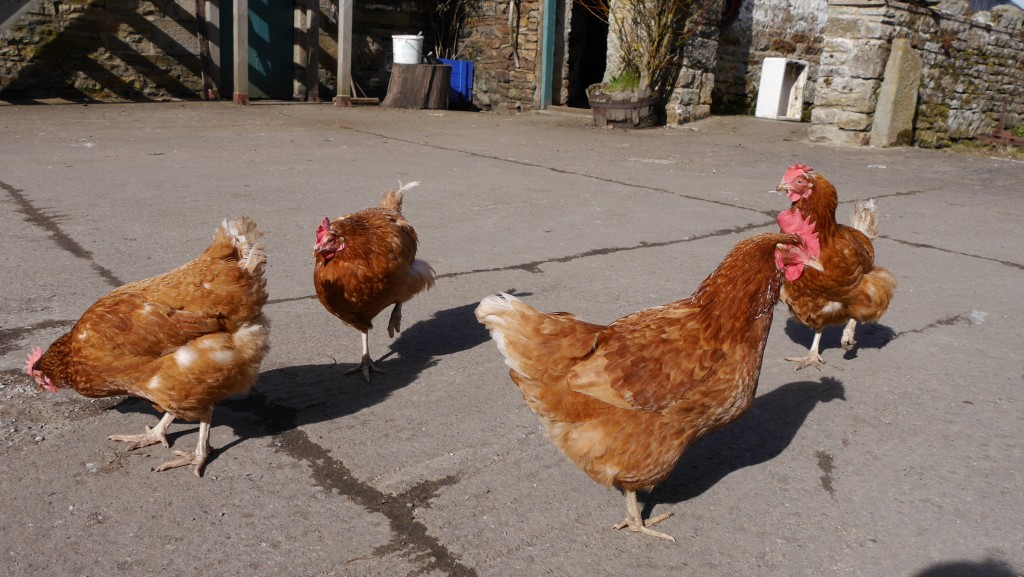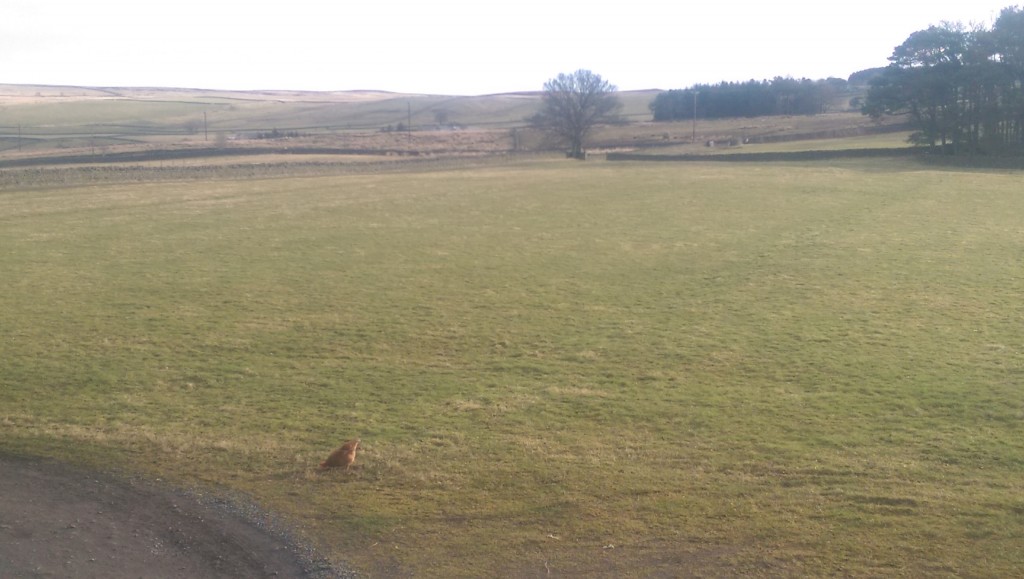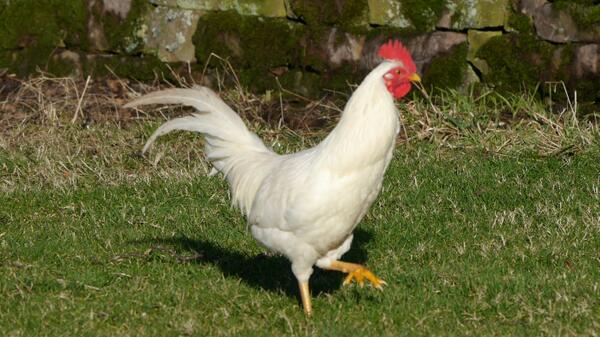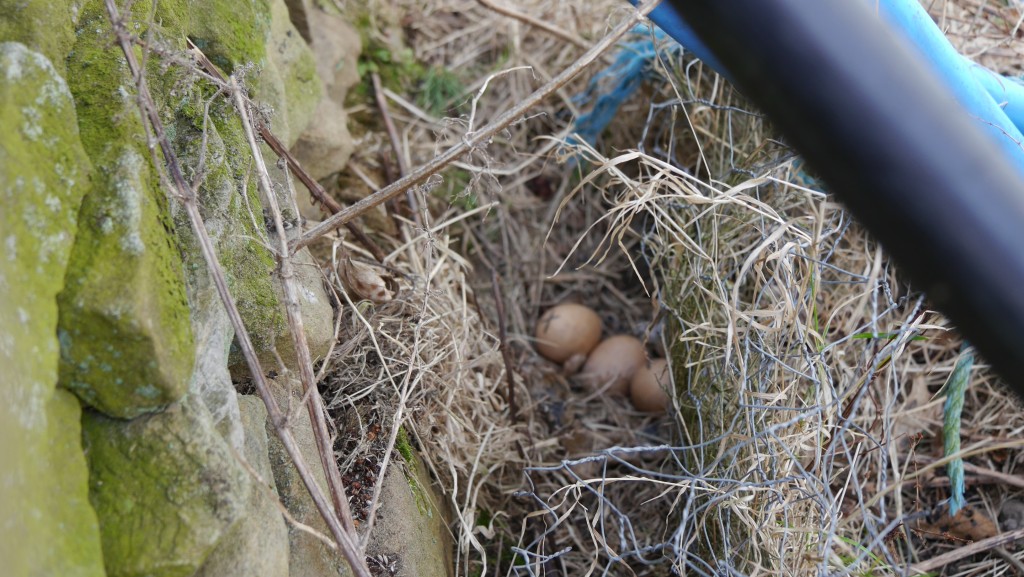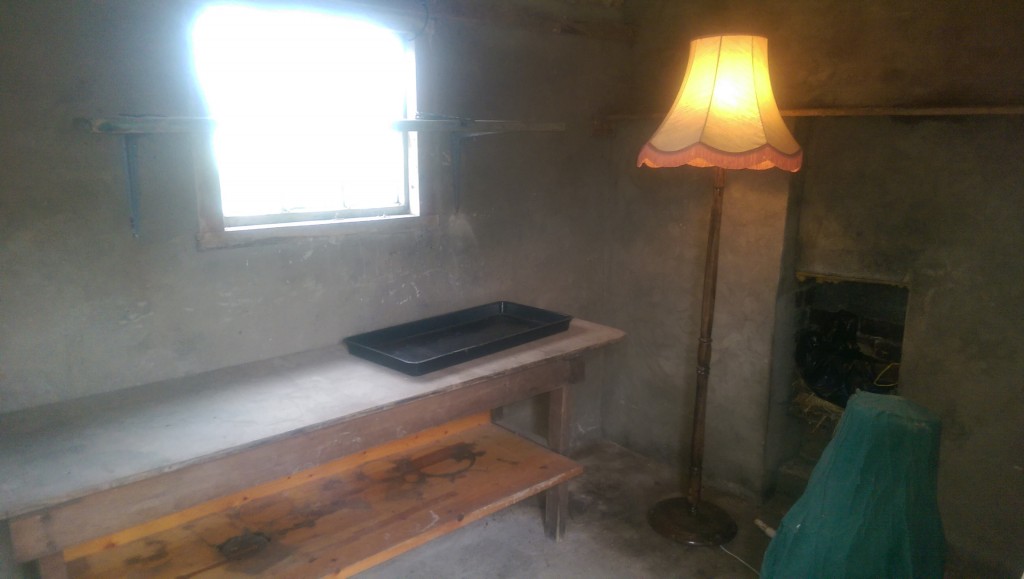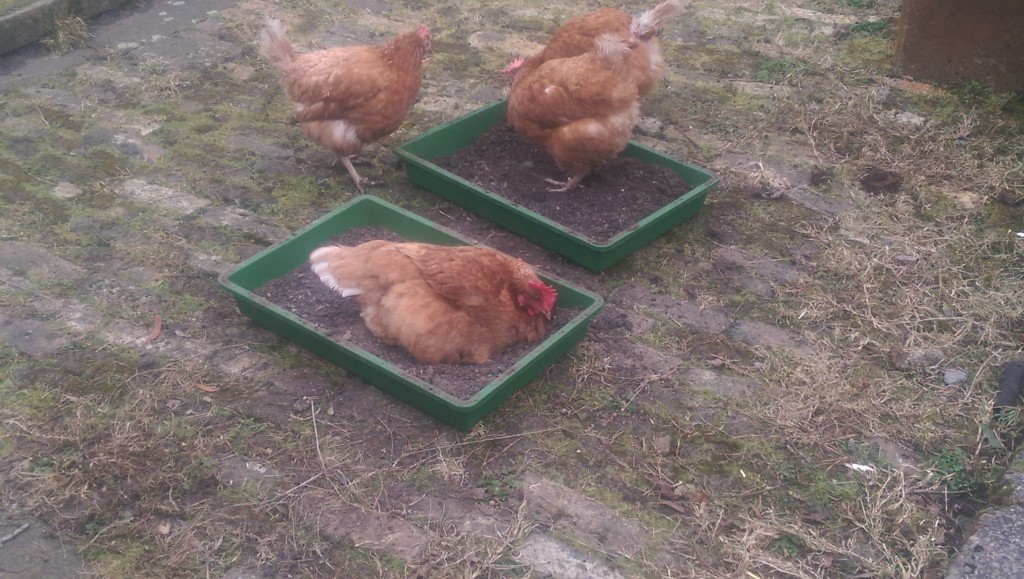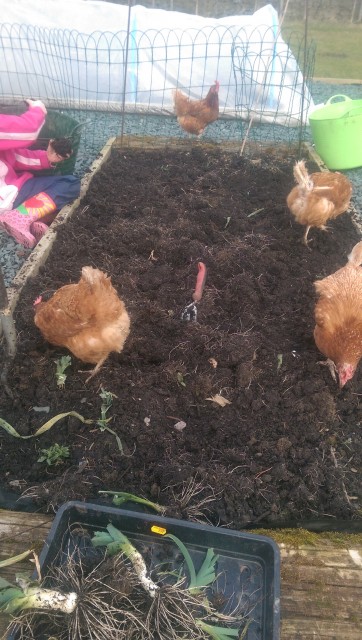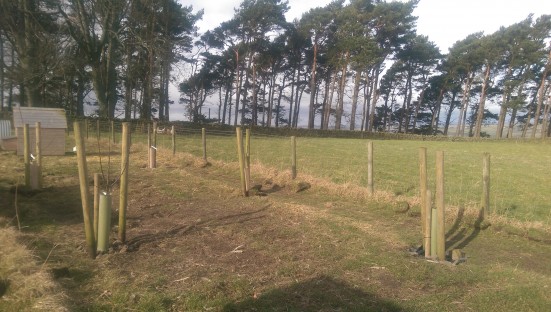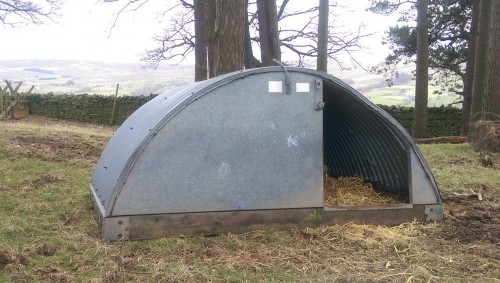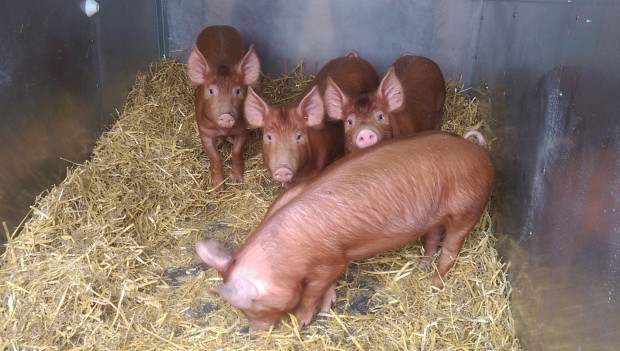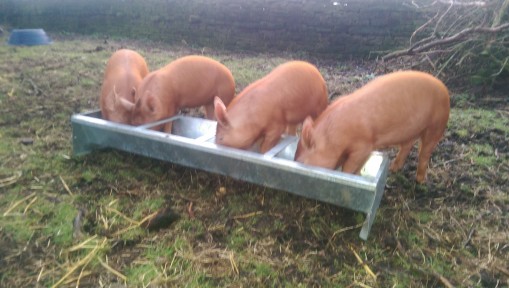Sometimes it seems to have been much longer but the latest batch of pigs have been with us for almost a month now. In fact they’ve just turned 3 months old and are settling in very nicely.
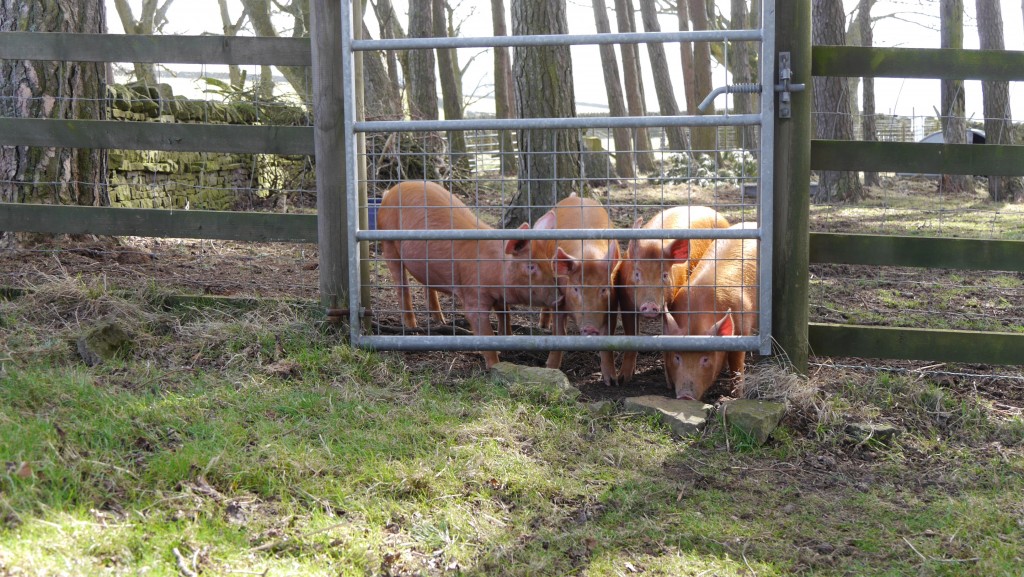
Their home in the original pig pen has held up fairly well despite their best efforts to trash the place. Luckily we planned ahead and already have another couple of pig pens that can be used so that we can rest the current one when needed.
I’ve even identified a corner of the current pen which has been so well turned over already that I might fence it off and plant some veg there but I’ll definitely need to investigate electric fencing first!
I’ve noticed that it always takes a week or two for new arrivals to adjust to their surroundings but they eventually figure out that they can trust the people who bring the food each day.
Now they’re always keen to see people at any time of day but the morning and evening visits with the green bucket of feed seem to be their favourite.
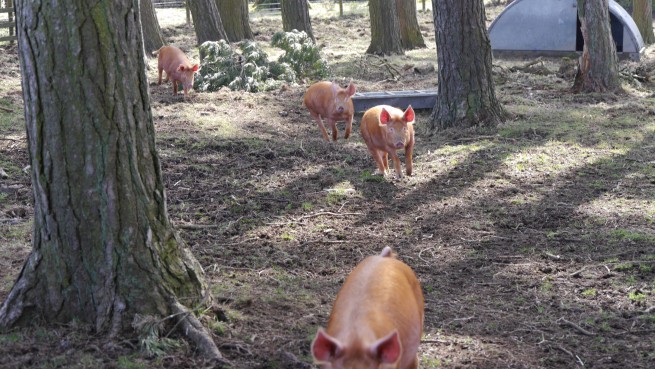
There is still the fairly tough decision to be made – which two of them will be kept for breeding and which are destined for the freezer. I’ve already been firmly told that no more than 2 can be kept but luckily this choice can be put off for a bit while I watch their development over the coming weeks.
At some point though the two “keepers” will need to be formally registered with the breed society. This is vital for the longer term “master plan” which is to eventually have a go at breeding pedigree Tamworths but that will only start towards the end of this year.
